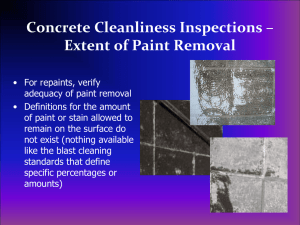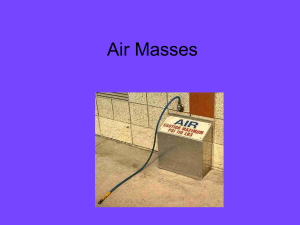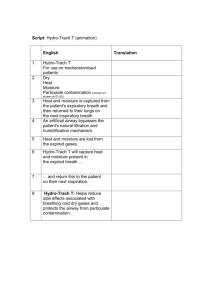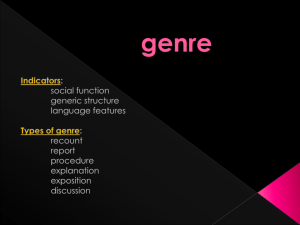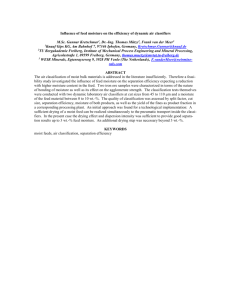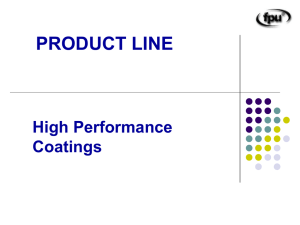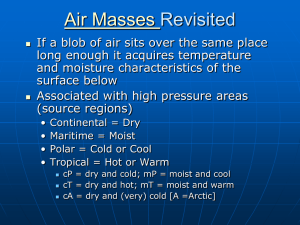moisture vapor control system
advertisement
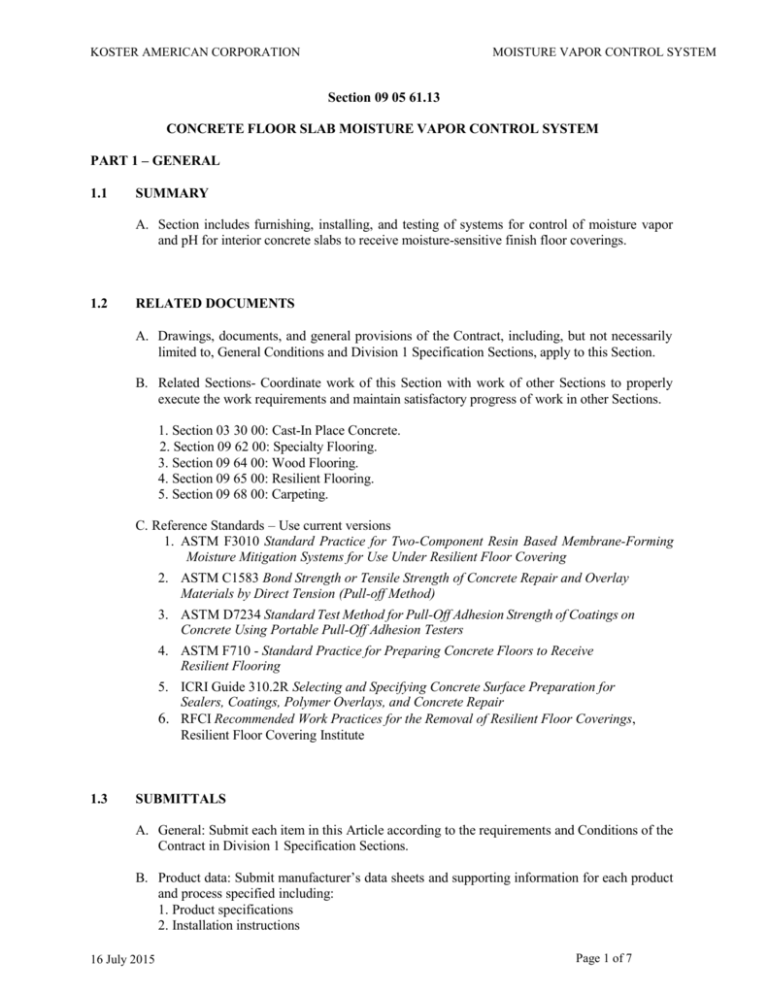
KOSTER AMERICAN CORPORATION MOISTURE VAPOR CONTROL SYSTEM Section 09 05 61.13 CONCRETE FLOOR SLAB MOISTURE VAPOR CONTROL SYSTEM PART 1 – GENERAL 1.1 SUMMARY A. Section includes furnishing, installing, and testing of systems for control of moisture vapor and pH for interior concrete slabs to receive moisture-sensitive finish floor coverings. 1.2 RELATED DOCUMENTS A. Drawings, documents, and general provisions of the Contract, including, but not necessarily limited to, General Conditions and Division 1 Specification Sections, apply to this Section. B. Related Sections- Coordinate work of this Section with work of other Sections to properly execute the work requirements and maintain satisfactory progress of work in other Sections. 1. Section 03 30 00: Cast-In Place Concrete. 2. Section 09 62 00: Specialty Flooring. 3. Section 09 64 00: Wood Flooring. 4. Section 09 65 00: Resilient Flooring. 5. Section 09 68 00: Carpeting. C. Reference Standards – Use current versions 1. ASTM F3010 Standard Practice for Two-Component Resin Based Membrane-Forming Moisture Mitigation Systems for Use Under Resilient Floor Covering 2. ASTM C1583 Bond Strength or Tensile Strength of Concrete Repair and Overlay Materials by Direct Tension (Pull-off Method) 3. ASTM D7234 Standard Test Method for Pull-Off Adhesion Strength of Coatings on Concrete Using Portable Pull-Off Adhesion Testers 4. ASTM F710 - Standard Practice for Preparing Concrete Floors to Receive Resilient Flooring 5. ICRI Guide 310.2R Selecting and Specifying Concrete Surface Preparation for Sealers, Coatings, Polymer Overlays, and Concrete Repair 6. RFCI Recommended Work Practices for the Removal of Resilient Floor Coverings, Resilient Floor Covering Institute 1.3 SUBMITTALS A. General: Submit each item in this Article according to the requirements and Conditions of the Contract in Division 1 Specification Sections. B. Product data: Submit manufacturer’s data sheets and supporting information for each product and process specified including: 1. Product specifications 2. Installation instructions 16 July 2015 2014 Page 1 of 7 KOSTER AMERICAN CORPORATION MOISTURE VAPOR CONTROL SYSTEM 3. Manufacturer’s certification that moisture vapor control products meet requirements of current version of ASTM F3010 4. Independent test reports supporting product manufacturer’s certificate of conformance to ASTM F3010 5. Completed manufacturer’s pre-installation checklist 6. Warranty Information C. Moisture Tests: Submit concrete floor moisture test results required by floor covering manufacturer. Perform moisture testing as described in ASTM Practice F710. Testing shall be performed according to the floor covering manufacturer’s specified ASTM Standard Test Method by an independent Testing Agency. Testing shall be performed by ICRI Tier 2 Certified Moisture Testing Technician. Provide moisture test results to the Architect, Owner, General Contractor, and Moisture Vapor Control System Manufacturer's Representative. 1.4 QUALITY ASSURANCE A. Qualifications of Applicator 1. Employ an Applicator trained and currently approved by the moisture vapor control system manufacturer, experienced in surface preparation and application of the products of this section, and subject to observation by the manufacturer. 2. Submit list of at least three similar projects performed by the applicator within the previous five years that used the same products and similar moisture vapor control system design. B. Manufacturer’s Qualifications 1. Manufacturer shall have not less than ten (10) years’ experience in manufacturing moisture vapor control systems. The moisture vapor control system must be specifically formulated and marketed for concrete floor slab moisture vapor control and pH control. C. Provide manufacturer’s standard fifteen (15) year warranty at no additional cost. Applicator of moisture vapor control system shall provide standard installation warranty for workmanship. D. Mockup 1. Install the moisture control system in a minimum 100 sq ft mockup area, using the same methods and equipment that will be used for the entire installation. Test tensile bond strength of the moisture mitigation system to the concrete substrate following ASTM Test Method D7234. The results must be equal to or greater than 200 psi with failure in the concrete before proceeding with installation of the moisture control system 1.5 DELIVERY, STORAGE AND HANDLING A. Deliver products to the job site in original unopened containers, clearly labeled with the manufacturer's name and brand designation. Each container shall be marked with batch or lot code traceable to manufacturing information. B. Store products in an approved ventilated dry area; protect from dampness, freezing, and direct sunlight. Product shall not be stored in areas with temperatures in excess of 90°F or below 50°F unless permitted by manufacturer’s instructions. 16 July 2015 2014 Page 2 of 7 KOSTER AMERICAN CORPORATION MOISTURE VAPOR CONTROL SYSTEM C. Handle products using methods that prevent breakage or damage of containers and prevent contamination of products. 1.6 PROJECT/SITE CONDITIONS A. ENVIRONMENTAL CONDITIONS 1. Do not apply moisture vapor control system to surfaces that may be exposed to uncontrolled weather conditions such as precipitation, wind, direct sunlight, etc. Do not apply when moisture is accumulated on the surface of the concrete or if precipitation is anticipated before the moisture control coating has cured. 2. Do not apply moisture vapor control system when temperature is lower than 50°F or higher than 90°F or expected to fall outside this temperature range within 24 hours after application. Do not apply moisture vapor control coating when temperature is above 80°F and rising or expected to rise during curing period of the moisture control coating. B. PROTECTION 1. Protect moisture vapor control system after installation to prevent damage from topical moisture, direct sunlight, and construction traffic for a minimum period of 24 hours after application. 1.7 SCHEDULING A. The Independent Testing Agency will coordinate scheduling with the Owner for moisture testing to permit sufficient time to test, submit and evaluate test results, and install the moisture vapor control system before installation of floor coverings. B. The moisture vapor control system manufacturer’s instructions must allow installation as early as 7 days after concrete placement. PART 2 – PRODUCTS 2.1 MANUFACTURER A. Moisture vapor control system shall be the product of a single manufacturer, no substitutions: KOSTER VAP I® 2000 System by: KOSTER American Corporation Corporate Headquarters: 2585 Aviator Drive, Virginia Beach, VA 23453 Phone: (757) 425-1206 – Fax: (757) 425-9951 Web address: www.kosterusa.com 2.2 MATERIALS A. General: Use materials of one manufacturer throughout the project as hereinafter specified. B. Moisture Vapor Control Coating: Select from among the following products 1. KOSTER VAP I® 2000 12 hour setting time, low VOC, 2-part epoxy resin coating. 2. KOSTER VAP I® 2000 FS 4 - 5 hour setting time, Zero VOC. 2-part epoxy resin coating 3. KOSTER VAP I® 2000 UFS 3 – 4 hour setting time, low VOC, 2-part epoxy resin 16 July 2015 2014 Page 3 of 7 KOSTER AMERICAN CORPORATION MOISTURE VAPOR CONTROL SYSTEM coating 4. KOSTER VAP I® 2000 ZERO VOC 12 hour setting time, Zero VOC, 2-part epoxy resin coating C. Primer for underlayment: 1. KOSTER VAP I® 06 Primer – non-porous substrate primer for use on VAP I® 2000 resin coating D. Self-Leveling underlayment: Select from among the following products 1. KOSTER SL 2. KOSTER SL Premium 3. KOSTER SC E. Primer for porous concrete containing excessive near-surface voids or high concrete surface profile 1. KOSTER KB-Pox IN, low viscosity, high modulus, 2-part epoxy resin F. Repair resin for non-movement joints and cracks 1. KOSTER KB-Pox IN low-viscosity, high modulus 2-part epoxy gravity-feed, crack injection resin G. Thickening agent for repairing spalls and excessively rough concrete 1. KOSTER TA fiber thickening agent, non-silica H. Movement joint sealant 1. KOSTER FS-H polysulfide resin joint sealant 2. Backer rod and accessory materials PART 3 – EXECUTION 3.1 EXAMINATION OF SUBSTRATE BEFORE INSTALLATION A. Provide information required in moisture control system manufacturer’s pre-job checklist. Submit completed checklist to moisture control system manufacturer for review before installation of the moisture control system. B. Concrete floor slab moisture testing is not required prior to application of moisture control system. 1. If moisture testing is performed, moisture testing shall be conducted according to the latest version of ASTM F2170 using relative humidity probes that have been allowed to equilibrate at each test location for at least two hours. Provide report in accordance with ASTM F2170 and floor plan showing moisture test results. C. Testing and evaluation for deleterious materials and contaminants that inhibit moisture control coating adhesion 1. It is the responsibility of the owner to provide a concrete floor slab free of contaminants and deleterious materials that can inhibit bond to the moisture control coating or develop deleterious reactions after the concrete floor slab is sealed. 2. Concrete substrates must be structurally sound, solid, and meet industry standards as defined in ACI Committee 201 Report “Guide to Durable Concrete.” Surfaces must 16 July 2015 2014 Page 4 of 7 KOSTER AMERICAN CORPORATION MOISTURE VAPOR CONTROL SYSTEM be free of moisture-sensitive patching and leveling materials, adhesives, coatings, curing compounds, concrete sealers, efflorescence, dust, grease, oils and any other materials or contaminants that can act as bond breakers. 3. The floor slab surface must be capable of withstanding steel shotblast preparation to ICRI CSP3. Excessively weak, soft, dusty, cracked, or uneven surfaces may not be suitable substrates, and may require additional concrete surface removal or patching before application of the moisture control coating. Such compounds must be long term resistant to high moisture and high pH. 4. Contaminated concrete may not be suitable to receive a moisture control coating. Testing and evaluation for contaminants and concrete condition is not required but is strongly recommended. Testing and evaluation of the floor slab can include: i. Solvent extraction and analysis for organic compounds such as oil, grease, plasticizers, silicones, solvents, and other chemical compounds that can inhibit bond to the epoxy moisture control coating. ii. Microscopical (petrographic) examination according to ASTM C856 to evaluate the concrete condition, potential deleterious substances, and suitability for shotblasting and coating adhesion. 5. Do not install moisture control system if substrate testing reveals unacceptable conditions. 3.2 SURFACE PREPARATION A. Remove existing floor finishes including floor coverings, coatings, paint, and adhesives. Follow RFCI Recommended Work Practices for the Removal of Resilient Floor Coverings. B. Abrasive surface preparation. 1. Grind perimeter of rooms and areas inaccessible to shotblasting using dry diamond media with vacuum dust extraction. Grind to ICRI CSP2. Do not smooth polish these areas. Grinding is allowed only in areas not accessible to shot blasting 2. Shot blast floors to ICRI CSP3. Shot blast as close as possible to walls, doorways, casework, and other permanently installed objects. Remove residual steel shot. 3. Acid etching is not permitted. C. Remove residual dust and debris by vacuum and dry sweeping. Do not use sweeping compound. Remove all foreign matter such as dust, adhesives, leveling compounds, paint, dirt, floor hardeners, bond breakers, oil, grease, curing agents, form release agents, efflorescence, laitance, shot blast beads, etc. D. Test concrete surface tensile strength after abrasive preparation in accordance with requirements of ASTM F3010 following Test Method C1583. If test results are less than 200 psi, repair concrete or repeat surface preparation to achieve required concrete surface tensile strength. E. Repair non-movement cracks, control joints, and large surface defects such as spalls, holes, and voids in accordance with manufacturer’s recommendations. Use low-viscosity, gravityfed crack mending resin for non-movement cracks and joints. Crack repair compound can be mixed with not more than 3 parts clean, washed, dry silica sand for sawcut control joints and wide cracks. Brush interior walls of crack or joint with neat crack repair epoxy resin before applying sand-resin mixture. After curing, grind surface flush with surrounding concrete. F. Repair spalls or excessively rough concrete surface using manufacturer’s fiber thickening agent mixed 1:1 by volume with moisture control resin. Mix thickening agent and resin thoroughly to uniform creamy consistency and apply by trowel, working material tightly 16 July 2015 2014 Page 5 of 7 KOSTER AMERICAN CORPORATION MOISTURE VAPOR CONTROL SYSTEM against clean, roughened concrete surface. G. Do not fill designed movement joints with moisture control epoxy resin. Fill movement joints with manufacturer’s recommended flexible joint filling compound or mechanical movement joint cover. H. Reinforcing fibers that become visible after shot blasting must be removed and vacuumed leaving no fibers exposed above the concrete surfaces. Provide an uncontaminated, clean, sound surface. 3.3 MIXING A. Mix two-part moisture control resin and hardener thoroughly for three minutes in manufacturers supplied containers following manufacturer's requirements to obtain a homogeneous mixture. Use a low speed motor less than 400 rpm and a two bladed Jiffy-type mixing blade only. Do not aerate. B. If smaller quantities are required, maintain manufacturer’s specified mix ratios by volume. C. Do not dilute with solvent. 3.4 APPLICATION A. After mixing, immediately pour material on the substrate in a ribbon. Empty can completely. Do not invert can to drain on concrete. B. Spread moisture control coating using manufacturer’s recommended notched squeegee and back-roll with a 3/8-in. nap epoxy-rated, non-linting roller. Completely cover the entire concrete surface with a uniform application of the moisture control coating as quickly as possible and allow the coating to self-level. Work into a wet edge and assure continuity of the coating across the entire area. C. Spread coating on ICRI CSP3 shotblasted concrete surface at 100 to 150 sq ft/gal. Concrete prepared to CSP3 coated at 100 to 150 sq ft/gal will yield average cured coating thickness 11 to 16 miles (0.011 to 0.016 in.). A rougher surface profile or a porous or absorptive concrete will require the use of more material to achieve sufficient coating thickness. KOSTER VAP I® 2000 moisture control coatings must be installed at a minimum layer thickness of at least 11 mils (0.011 in.). Less layer thickness results in a higher permeance of the cured coating that will not meet performance requirements of ASTM F3010. D. Allow coating to cure the minimum length of time specified for the product. 3.5 INSPECTION A. Inspect cured moisture control coating for complete, uniform coverage. Note any defects to be repaired such as pinholes, bubbles, or thin spots. B. Repair or install additional coats as necessary to produce a uniform, flat, smooth, coating surface that meets manufacturer’s minimum thickness requirements in all areas. C. Test adhesion of the moisture control coating to the concrete substrate as required in ASTM F3010 following Test Method D7234. Tensile bond strength of the coating must be at least 200 psi with failure in the concrete. Repair or replace areas that do not meet this requirement. 16 July 2015 2014 Page 6 of 7 KOSTER AMERICAN CORPORATION 3.6 MOISTURE VAPOR CONTROL SYSTEM CEMENTITIOUS UNDERLAYMENT A. After installation of the moisture control coating, self-leveling cementitious underlayment or trowelable cementitious skim coat can be installed. 1. Apply KOSTER VAPI®06 Primer at 650 to 800 sq ft/gal using a non -linting short-nap roller. Apply a thin, uniform coating over the entire cured moisture control epoxy coating. Do not dilute with water or solvent. Do not apply thicker than 650 sq ft/gal. 2. Mix and apply KOSTER SL standard underlayment, KOSTER SL Premium underlayment, or KOSTER SC skim coat following manufacturer’s instructions. Allow to cure and dry according to manufacturer’s instructions before installing floor coverings. 3.7 CLEANING A. Clean tools and equipment in contact with epoxy resins using xylene or other suitable cleaning agent immediately after use. B. Remove debris and unused materials from project site. Dispose chemicals, rags, and other materials in accordance with applicable regulations and specific jobsite instructions. 3.8 PROTECTION A. Protect applications of the moisture control system during the specified cure period from traffic, topical moisture, and contaminants. B. Protect installed cementitious underlayment or skim coat until floor covering installation. END SECTION 09 05 61.13 16 July 2015 2014 Page 7 of 7

